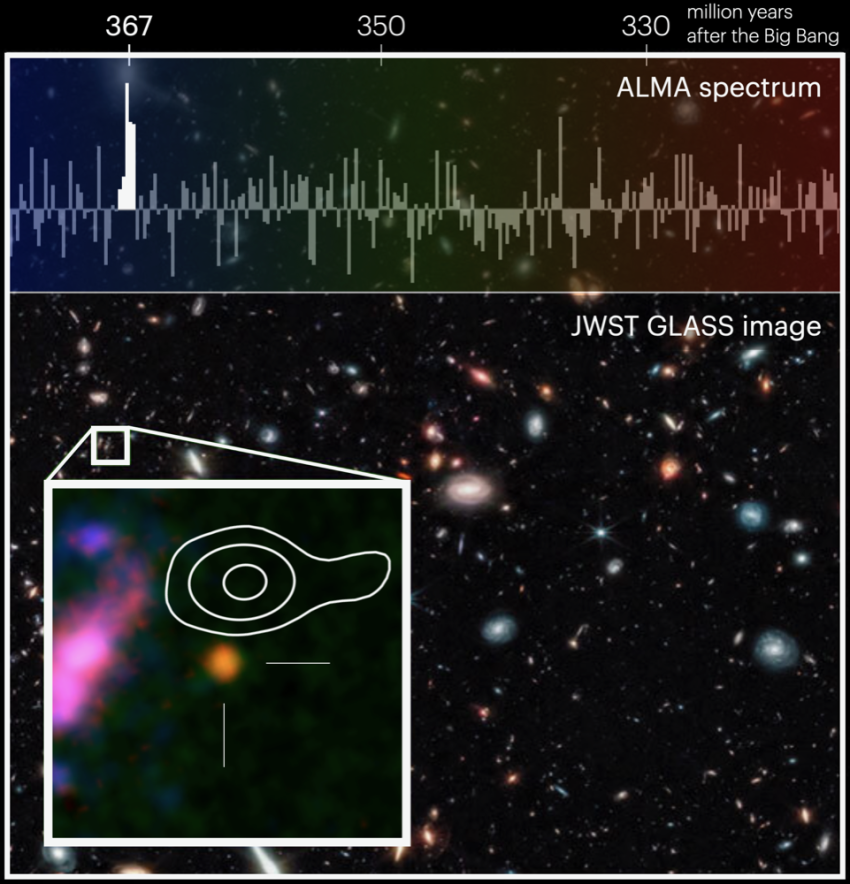Using the capabilities of the ALMA radio telescope complex, a team of Japanese researchers confirmed the record-low age of the GLASS-z12 galaxy. This is one of the most distant objects known to us.

GLASS-z12 was identified in the images of the James Webb Telescope. Its redshift index (z) exceeds 12. This means that the galaxy is located at the edge of the visible Universe. Based on the redshift indicator, astronomers determined that we saw GLASS-z12 as it was just 350 million years after the Big Bang. Taking into account the expansion factor of the Universe, the distance to it now is 33.2 billion light-years.
At the same time, the redshift estimate of GLASS-z12 was based only on photometric observations. To confirm it, Japanese researchers used the ALMA radio observatory. It managed to register a line of oxygen radiation in the spectrum of the galaxy. Subsequent analysis of the data showed that the spectrometric redshift associated with this line was z = 12.1. This corresponds to the galaxy’s observed age of 367 million years. Thus, it really is one of the most distant objects known to us in the Universe.
In that distant epoch, the diameter of GLASS-z12 was about 3 thousand light—years, and the mass was a billion solar. For comparison, the diameter of our Milky Way is 100 thousand light-years, and the mass is about 1.15 – 1.5 trillion solar masses.
The researchers also managed to determine the metallicity of the galaxy. It is less than 0.1 of the metallicity of the Sun, which is not surprising at all, given its very small age. The galaxy also contained very little dust. Astronomers estimate that the stellar population of GLASS-z12 is 70 million years old. The galaxy managed to spend only from 2% to 14% of its gas reserves on the formation of luminaries.
According to https://academic.oup.com
Follow us on Twitter to get the most interesting space news in time
https://twitter.com/ust_magazine

